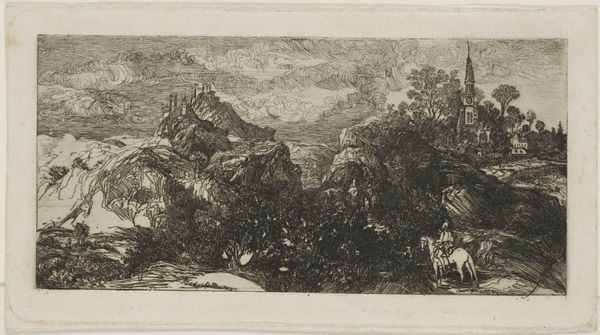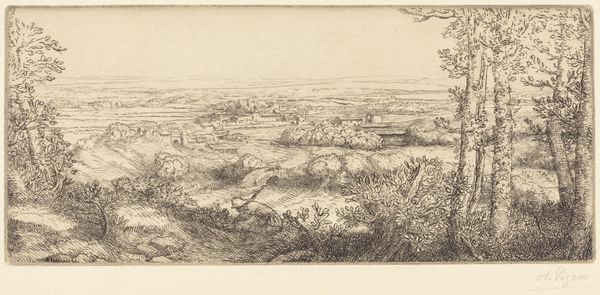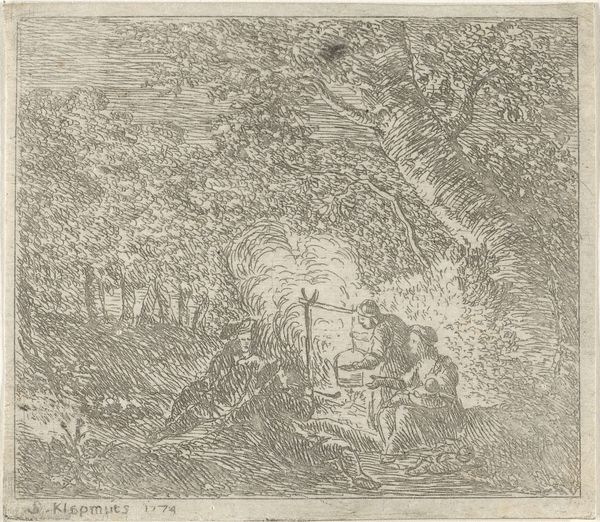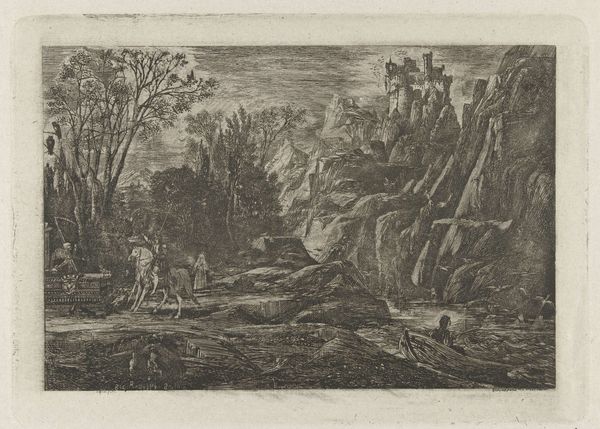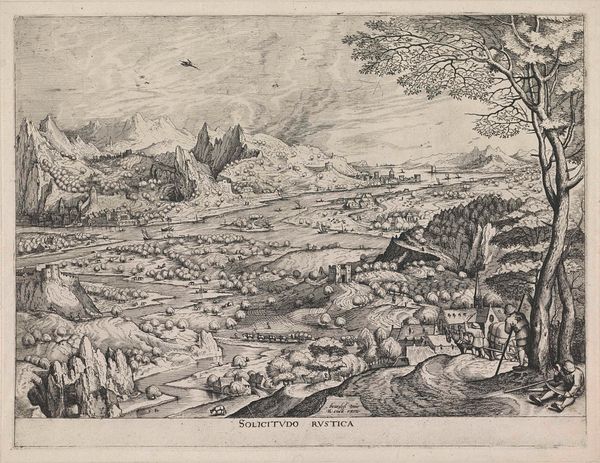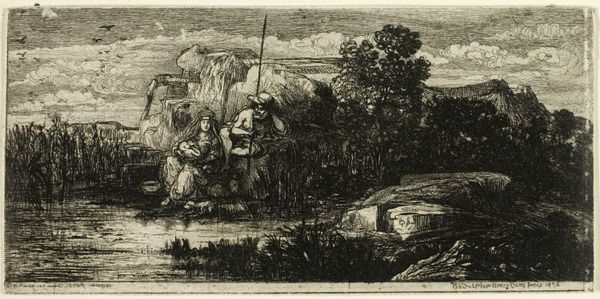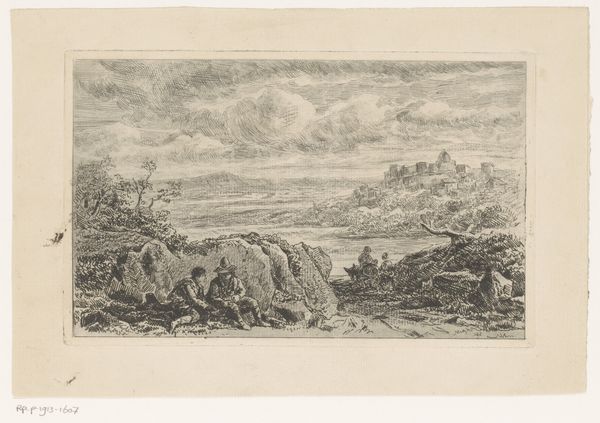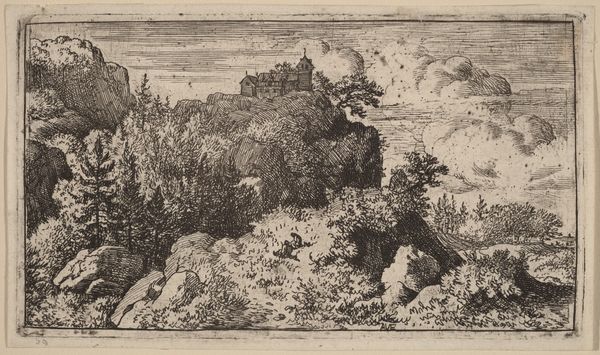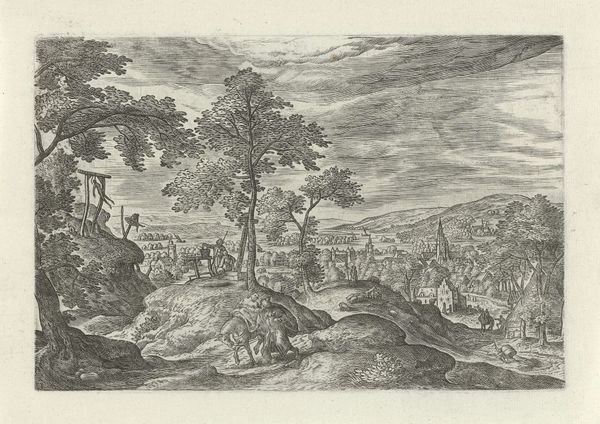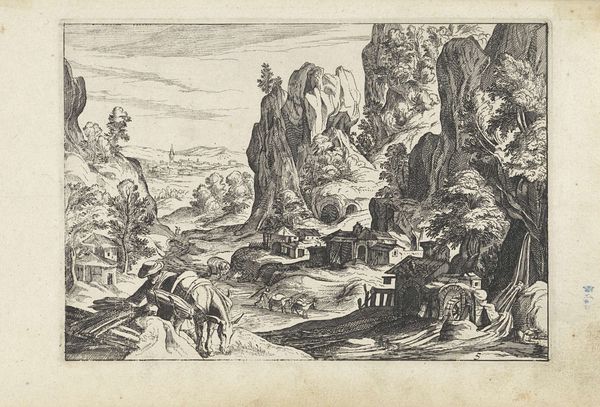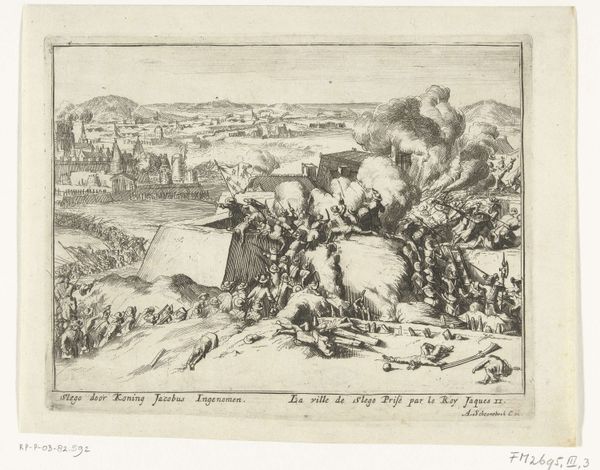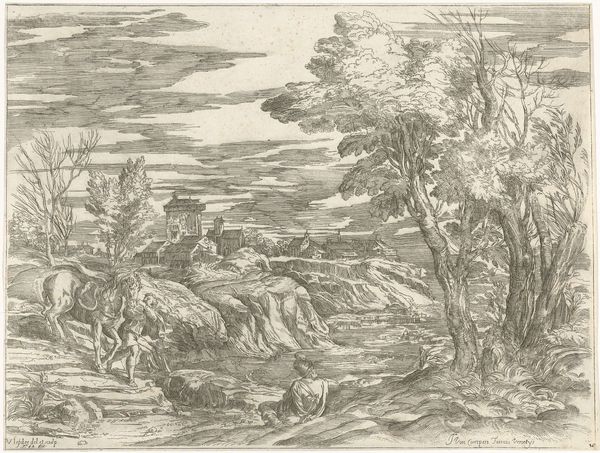
Dimensions: 51 × 107 mm (image); 65 × 123 mm (plate); 155 × 225 mm (sheet)
Copyright: Public Domain
Editor: Right, next up we have Rodolphe Bresdin’s etching "The Holy Family with Pole," created in 1858. It's so intricate; all those tiny lines create this almost dreamlike landscape. I find it really… unsettling. What’s your interpretation of this work? Curator: Unsettling is a great word. The density of the lines, the near claustrophobia of the composition… It speaks to the anxieties of the mid-19th century. Think about France at that time – revolution, industrialization, the rise of the bourgeoisie… Does the 'Holy Family' seem particularly holy or comforted in this landscape? Editor: No, not at all. They seem almost like refugees, hidden within the chaos of nature. That pole… is it meant to be a symbol of authority or something? Curator: Possibly. Or perhaps it's a marker of their precarious existence, a desperate attempt to claim space in a world that feels increasingly unstable. Look how Bresdin contrasts the 'natural' with the figures, nearly burying them in shadow, suggesting their vulnerability to socio-political upheaval. Where does power reside in this image, and who has it? Editor: Definitely not them. The landscape feels dominant, almost oppressive. So, it’s not just a religious scene, it's a commentary on the family's lack of agency. Curator: Precisely. It reframes the traditional narrative. It critiques not just religious iconography but the societal structures that leave marginalized groups – think working-class families –disenfranchised and struggling for survival. The traditional ideal of a pastoral, safe haven simply doesn't exist. Editor: Wow, I hadn’t thought of it that way at all. It's easy to miss all of that complexity. Curator: Exactly! That's the power of art. Bresdin takes a familiar theme and uses it to ask uncomfortable questions about faith, family, and power in a rapidly changing world. Hopefully, we now have tools to approach this complexity. Editor: Absolutely. It makes you consider whose stories are valued and whose are obscured.
Comments
No comments
Be the first to comment and join the conversation on the ultimate creative platform.
